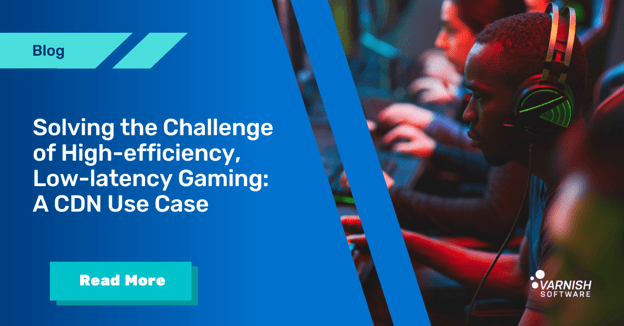Smooth, uninterrupted streaming is the norm, the expectation – users automatically expect their online viewing experiences to be more fulfilling, curated, personal – and more on-demand – than anything the traditional broadcast TV experience provides. Streaming performance (whether live or VoD) and quality of experience are also baked into the expectation. The number of users and devices streaming video continues to grow exponentially as demands on network resources are bursting at the seams.
How can capacity grow without raising the costs of video delivery? How to meet performance requirements – sustainably? How about storage? How about routing – making sure each device gets requested content in the right format and bitrate? How can you balance all of these elements to eliminate buffering and latency, whether viewers are watching a high-demand, live event like a sports finale or a long-tail piece of content that’s almost never accessed?
We write a lot about the streaming side of content delivery – but having full control over streaming AND the content delivery network makes all the difference. Commercial CDN partners may play a big role, but many factors that sustain the CDN performance you need to meet your own, and your viewers’, requirements can be within your control.
Content delivery networks and caching
Content delivery networks (CDNs) and caching are basic parts of the standard streaming setup. No surprises there.
But how can you avoid unpleasant surprises -- like audiences being confronted by unwelcome spoilers -- when your CDN isn’t delivering live streaming in near-real-time? Latency is responsible for destroying many “high-value” viewing experiences, such as major sporting events, robbing viewers of the real-time experience and exposing them to spoilers via social media, or even their neighbors cheering next door. Given the expense for networks and services streaming such events, it’s difficult to understand how they’d want to leave the details of content streaming to chance.
Removing chance from the CDN equation
There are a number of things that can malfunction in the content delivery process - video delivery is characterized by a few complex functions, and the CDN should be able to manage some of these to ensure an uninterrupted, high-quality viewer experience. While performance is not guaranteed, of course, you can take steps to control your content delivery.
We’ve discussed the concept of the DIY and private CDN or hybrid CDN setup that will give you, above all, choice and flexibility, but also resilience, the targeted edge PoP footprint distributed to reach your audience, and control over the how of content delivery. With large, commercial CDN solutions alone, a lot of this control is out of your hands: you’re sharing resources and not necessarily able to choose the PoPs that are most strategic for you. You can realize performance and efficiency gains by having control over your CDN architecture, choosing a highly distributed edge, for example, to ensure high-performance streaming delivery, where caching comes into play.
For example, when you dive into the advanced functionalities that differentiate your live streaming content delivery, you may find that your commercial CDN is equipped to give you basic caching - which is an essential for content streaming. But for live streaming, you need much more granular control over caching and invalidation policies -- being able to cache content for short spans to let all users access each segment at a specific point in time. You can repackage content on-the-fly at the edge of the network, saving storage and backhaul effort. Meanwhile for video-on-demand (VoD), you need to be able to store and deliver massive libraries of content, regardless of whether that content is brand-new and in-demand or the never-accessed long-tail content buried in the recesses of the content library.
The more control you have, the more flexible you are able to be in configuring how, when, where/to whom content is delivered. Delivering spoiler-free, high-performance streaming content at scale involves a lot of moving parts. You can simplify and remove chance from the equation by looking beyond the one-size-fits-all commercial CDN approach to discover what a custom CDN setup for streaming could look like for you.
/VS-logo-2020-197x60.png?width=136&height=60&name=VS-logo-2020-197x60.png)


